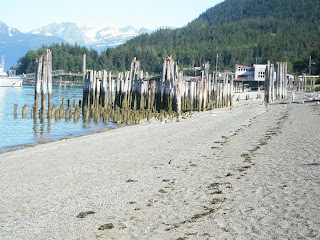
 There is an aesthetic of a wooden crate which is appealing. Although sometimes associated directly with the past, they are still utilized regularly for transporting and storing large, heavy, and/or heavy pieces.
There is an aesthetic of a wooden crate which is appealing. Although sometimes associated directly with the past, they are still utilized regularly for transporting and storing large, heavy, and/or heavy pieces.For me, they serve this purpose in my sculptural work as well as an extension of the piece itself. They also seem to me as a means to overcome the pedestal. Although I have yet to work through all of these issues, there is the possibility of displaying pieces on top of these crates or in positions of being removed from such a container. Certain pieces may even be displayed within a crate, depending on the specific installation.
The crate pictured on the red hydraulic lift (at bottom) is one which I recently built. It sits 4 feet long, by about 2 feet wide and 2 feet tall. I've envisioned creating an environment in a gallery setting in which it is as if the viewer just walked into a shipping yard, warehouse, or other industrial seen. Although I very much approach my sculptures as objects, I'm interested in how they might interact together to create more of an installation. I've also gained a deeper respect and appreciation for the process not only of art making but also of transportation; I would like these aspects to be apparent in my work also. But again, most important, I'm drawn to this notion of environment or installation, moving beyond the object so as to give it a new identity.























